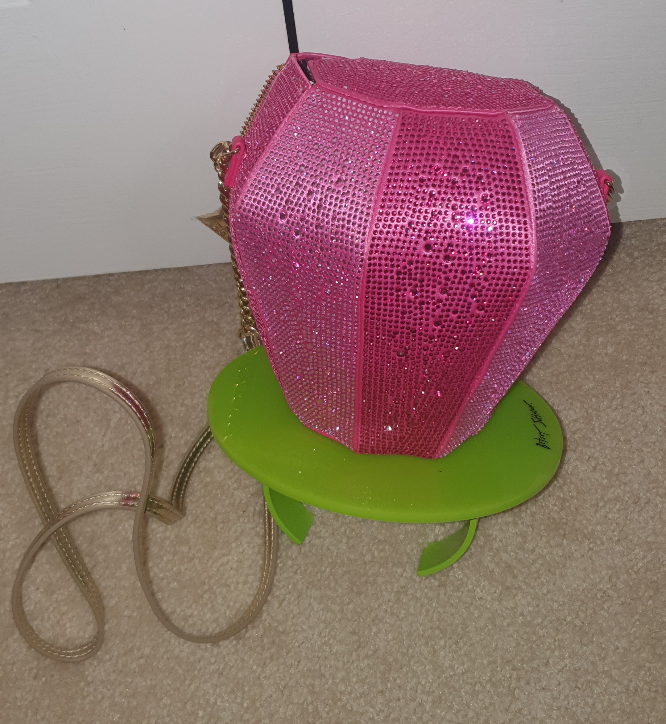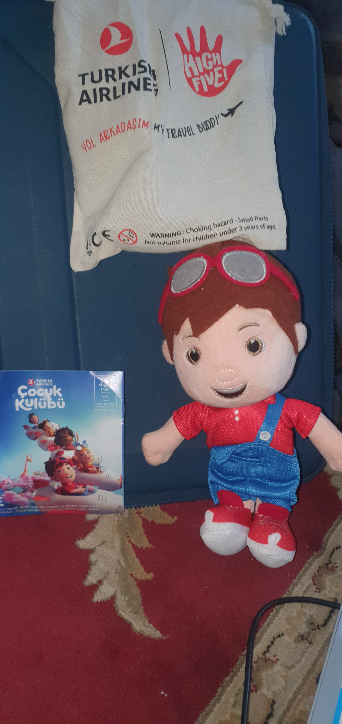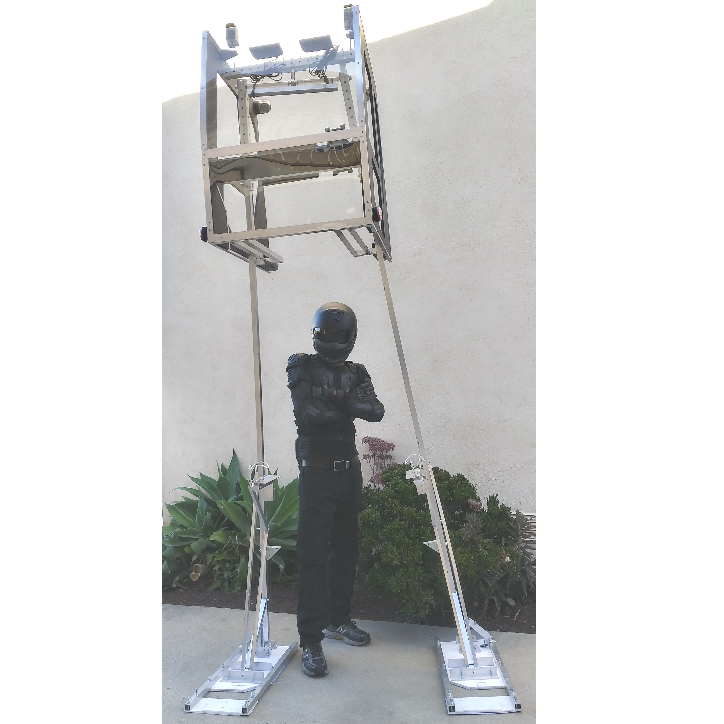How A Young Woman Brought Mecha To Market
In early 2022, I was continuing to ponder the path to market for these giant 11-foot-tall mecha walking vehicles. I've been a product development consultant my entire adult life, specializing in the development of new products, business research, and marketing/advertising.
One of my clients has two 501(c)(3) non-profits, one a literacy non-profit (Urban Literacy Project) and the other a technology non-profit (Los Angeles Academy of Media & Technology). Discussing the lack of opportunities for women in technology with the Director of the non-profits, Steve Jefferson, we decided to make our focus women in technology and I developed an intern training program, Women Innovate Tech (http://womeninnovatetech.org) as a way to help achieve that.
To gauge public interest in this, I ran Google AdWords ads for the intern training program through the Google Ad Grant that I helped the technology program get approval for. The Google Ad Grant provides up to $10,000 per month in free Google advertising to qualified non-profits and isn't easy to get.
First I ran ads that discussed advancement of technology, under the name InnovateTech. As I have published numerous Amazon books discussing women's invention of writing and writing technology in ancient Egypt 5100 years ago, I also began running Google ads mentioning women's invention of writing, engineering, architecture, without having done so there would be no books, schools or libraries, and there would be no Microsoft, Amazon, Facebook, Google or Tesla.
These ads mentioning women's invention of writing, that's been the basis of today's technology revolution but that has be kept quiet in education, academia and the work place, performed at a much higher rate that the ads not mentioning women's ancient innovation achievements. So I suggested to Steve that we need to shift our focus to women in innovation, which I referred to as Women Innovate Tech. And that Women Innovate Tech should be an intern training program to help get women into product development, engineering and industrial design.
Did I mention that women developed and ruled the first ancient Egyptian city 5100 years ago, Megbi City "City of Food" (referred to as "Nekheb City" by Egyptologists) in the north-east African Nile Valley?
Well, it's true. And at the same time, another woman developed and ruled the large-scale farming in Lower Egypt (today's Israel, Syria and Jordan), to supply Megbi City. Yes, women were the first rulers and co-founders of ancient Egypt -- not men. Their title, Weyzero, means "Mrs.", as the queen mothers, owners and commanders of ancient Egypt.
As a result of the co-founding of ancient Egypt by the two queens, another woman, whose name Sewasew means "grammar" (referred to as "Seshat" by Egyptologists), invented writing to facilitate the activities of the two queens, Queen Megbit (referred to as "Nekhbet" by Egyptologists) and Queen Mirtnesh (referred to as "Meret-Neith" by Egyptologists). These details were presented in the Women Innovate Tech Google ads and had an immediate and dramatic impact.
In fact, the Women Innovate Tech ads performed so much better than the ads not mentioning ancient women's role in the invention and development in technology, that the ads increased the normal 5 website visits per day to 400 page visits per day -- that's an incredible 12,000 page visits per month. All because the public is interested -- if not shocked -- that information about women's invention of high-tech has been kept so quiet in modern society.
I told Steve, next we should have a ground-breaking product for the interns to develop, and I had many that could be implemented in the intern training program. So, the current mecha walking vehicles were developed with a Women Innovate Tech intern, Ms. DaYoung Ki, a university student majoring in marketing, selected out of a field of 24 applicants.
I told DaYoung, "You've never done anything like this before and you likely never will. Be brave and make all the decisions to get the mecha to market." She said, "Okay I will," and we begin immediately developing the mecha, going from concept to working prototype in only 30 days, DaYoung making all the final decisions (https://walkingvehicles.womeninnovatetech.org).
Immediately afterwards, we listed the mecha on Amazon and conducted a 33-day Facebook ad campaign, promoting a "Tower Over Your Opponents" Facebook post, which generated a 21% engagement rate from a reach of 23,000, along with a 9% click-through rate to the Amazon listing. Also, over the 33-day campaign, there were 60 comments, 75 likes, and 39 shares, many of these shares to laser tag and paintball Facebook groups. And this was the start of the mecha for the consumer market (see the post at https://www.facebook.com/LaserTagWarMachines/posts/pfbid02USN1uG6zfwgxT7T4CLFPt7LJs5f7iqAHpXjHpCk7m1KgCFJRkrUJawAAh8SpPknLl).
Challenges of Women In Tech Today
Today, only about 25% of the employees of Google, Apple, Facebook, Amazon, and Microsoft are female (source: Statista), yet 63% of men in technology companies view their companies as equal employers regarding gender (source: TechRadius).
When it comes to women in power positions at tech companies, only 37% of tech startups have at least one woman on the board of directors. And recent research shows that women hold less than 20% of all leadership positions in technology (source: Finances Online). More specifically, only 19% of women hold tech senior vice president roles, while only 15% hold CEO positions.
It only gets worse for women looking to start a tech business, because approximately only 2.5% of female companies get funding. Specifically, out of the $150 billion invested by venture capitalists, women-founded companies receive less than $3.4 billion. (source: Fortune).
Even with these dire realities, 74% of girls express a desire for a career in STEM fields (source: TechCrunch). But the reality in the tech workforce, about the same percentage, 72%, of the female tech workforce feel constantly outnumbered in business meetings. In addition to this, 26% of respondents also reported being outnumbered by at least a 5:1 ratio.
This imbalance in tech management is a serious problem. Statistics have shown that one of the most common reasons women quit their tech jobs include weak management support, where approximately 50% of women quit their jobs before the age of 35. In addition, they are abandoning their jobs at a 45% higher rate than the men in their industry (source: Trust Radius).
And things are worse for women of color. Amongst the total tech workforce in 2020, 14.1% were white women, 9.6% were Asian women, 2.2% were black women, and 1.7% were Latin women (source: Finances Online).
But the statistics show that Fortune 500 companies with at least 3 women in leading positions saw a 66% increase in ROI (source: Women Who Tech). And it is known that small businesses employ nearly half the American workforce (47.1% of US employees) and in 2020 nearly half of the businesses in the US were women-owned (source: Finances Online).
Interestingly, smaller tech companies are more likely to employ women (source: Finances Online). More specifically, tech companies with less than 1,000 employees hire about 30.02% of women in tech (source: Women In Technology).
In fact, companies should hire women not because they feel pressured by society. Companies should because it’s worth it! Similarly, investors should invest in female-owned startups because it’s better for their bottom-line.
Here Are the Facts About Women & Technology
In the 4.4 million years of our fossil record and 200,000 years of modern human existence, only in the last 5100 years have we had writing and therefore high-tech. That is only the last 0.12% of our 4.4 million year fossil record and only 2.5% of our 200,000-year modern human record.
What this really means is, had women not invented writing and technology, statistically the odds are that we would not likely have writing, computing and high-technology today. Sewasew solving an ancient communications and accounting issue changed the world into how we know it today.
So why shouldn’t women continue to innovate tech? Women’s imaginations invented it and made today’s high-tech possible.
Simply put, the Oxford Dictionary defines communication as the means of sending or receiving information. Any document has this means, as does computer coding, bookkeeping and accounting, architectural designs, engineering calculations, school or library books and more. Likewise product designs, logos, marketing and advertising – all the elements that make up successful products.
Women Belong In Tech and Can Innovate At Least As Well As Men
More than 60% of Gen Z women started coding between the age of 16 – 21. And 25% were already coding before they were 15. This is a direct result of the rising number of opportunities in education.
Such educational opportunities power programs such as Women Innovate Tech, providing school girls with unprecedented hands-on experience in ground-breaking technology, product development and engineering. As a bonus, many of the product projects are on the market or have been successfully implemented in the market. For those products the program participants are able to determine the next iteration of them.
Let's all help young women get back to their ancient role of innovating tech. Let's all help women innovate tech!
Related Blogs
Recent Blogs

Biographies and Interviews
Interview on “One! The Evolution of Civilization” by Jay Horowitz – January 2026

Product and Book Reviews
Ring Pop Purse

General
Airplane Toy Kits: Turkish Airlines

Press Release
Goliath Acquires Crazy Aaron’s® in Global Deal

Press Release
SKY CASTLE® TEAMS UP WITH MINECRAFT TO INTRODUCE NEW STICKI ROLLS® COLLECTION
See more
Recent Wiki

BOOK REVIEWS
Game Review: Cats & Boxes

PEOPLE
Ana Maria, Founder of The Magical Underland Inc., Rings in the Holidays with a new kind of Christmas Tree

BOOK REVIEWS
Game Review: IQ Circle

PEOPLE
Catching up with Eric Olsen, The Inventor of Flip 7 and Co-Creator of Messy Table Games

BOOK REVIEWS
Book Review: Happytecture by Anna Devís & Daniel Rueda
See more
POP's Got Talent

POP Entertainment
Randy Klimpert Shares his Ukulele Collection

POP Entertainment
Steve Casino Peanut Art

POP Entertainment
Everyone's Talking about POP!

POP Entertainment
Princess Etch - a Multi-Talented Etch A Sketch Artist

POP Entertainment
Joseph Herscher of Joseph' s Machines.
See more
Recent POPcast

Hidden Role: The Brains Behind your Favorite Games
Connie Vogelmann designed Apiary & Wyrmspan!

Hidden Role: The Brains Behind your Favorite Games
Bob Fuhrer... Is THE Crocodile Dentist!

Hidden Role: The Brains Behind your Favorite Games
Tom Dusenberry... Bought Atari, Wizards of the Coast, and Avalon Hill!

Hidden Role: The Brains Behind your Favorite Games
Matt Leacock created Pandemic... the game!

Hidden Role: The Brains Behind your Favorite Games
Scott Brown and Tim Swindle... are Launching a New Sport!
See more
POPDuos

POPDuos: Interviews with Legends and Leaders
POPDuo: Richard Dickson, Mattel’s President & COO, and Kedar Narayan, Young Inventor Challenge AMB

POPDuos: Interviews with Legends and Leaders
POPDuo: Will Shortz and Josh Wardle

POPDuos: Legends and Leaders Explore Creativity
POP Duo: Elan Lee, Co-Founder, Exploding Kittens.and Jeff Probst, Host and Exec Producer, Survivor

POPDuos: Legends and Leaders Explore Creativity
POP Duo: David Fuhrer, MNG Director, Blue Sq Innovations & Shawn Green, past Dodgers & Mets MLB Star

POPDuos: Legends and Leaders Explore Creativity
POP Duo: Bob Fuhrer, Founder, Nextoy and Tom Fazio, Golf Course Designer
See more



















